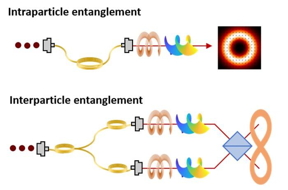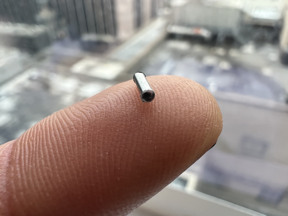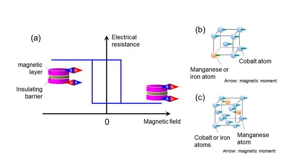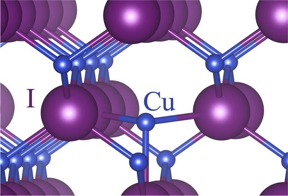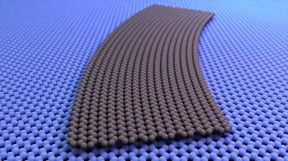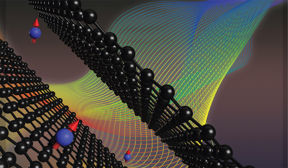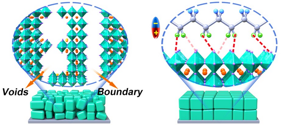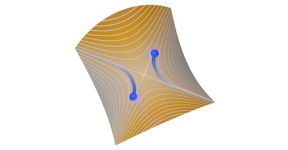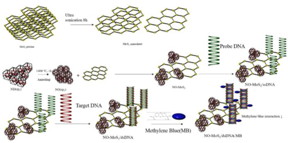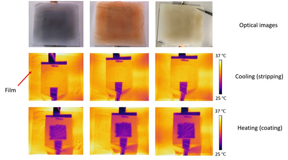Home > News > This new nanotech could help clean up Earth’s microplastics
August 3rd, 2019
This new nanotech could help clean up Earth’s microplastics
Abstract:
Now, scientists have designed reusable nano-sized reactors — called nanocoils — that can trigger microplastic breakdown. The work, published Wednesday in the journal Matter, could someday be applied to wastewater, cutting off the flow of microplastics before they are flushed into the environment. The study also found the broken down pieces of the microplastics could be used as carbon-based food for plant-based lifeforms like algae.
Source:
pbs.org
| Related News Press |
News and information
![]() Electricity harvesting from evaporation, raindrops and moisture inspired by nature January 6th, 2023
Electricity harvesting from evaporation, raindrops and moisture inspired by nature January 6th, 2023
![]() Lithium-sulfur batteries are one step closer to powering the future January 6th, 2023
Lithium-sulfur batteries are one step closer to powering the future January 6th, 2023
![]() Wafer-scale 2D MoTe₂ layers enable highly-sensitive broadband integrated infrared detector January 6th, 2023
Wafer-scale 2D MoTe₂ layers enable highly-sensitive broadband integrated infrared detector January 6th, 2023
Possible Futures
![]() Development of bio-friendly transparent temperature sensor technology that precisely measures temperature changes by light January 6th, 2023
Development of bio-friendly transparent temperature sensor technology that precisely measures temperature changes by light January 6th, 2023
![]() Dual-site collaboration boosts electrochemical nitrogen reduction on Ru-S-C single-atom catalyst January 6th, 2023
Dual-site collaboration boosts electrochemical nitrogen reduction on Ru-S-C single-atom catalyst January 6th, 2023
Announcements
![]() Electricity harvesting from evaporation, raindrops and moisture inspired by nature January 6th, 2023
Electricity harvesting from evaporation, raindrops and moisture inspired by nature January 6th, 2023
![]() Lithium-sulfur batteries are one step closer to powering the future January 6th, 2023
Lithium-sulfur batteries are one step closer to powering the future January 6th, 2023
![]() Wafer-scale 2D MoTe₂ layers enable highly-sensitive broadband integrated infrared detector January 6th, 2023
Wafer-scale 2D MoTe₂ layers enable highly-sensitive broadband integrated infrared detector January 6th, 2023
Interviews/Book Reviews/Essays/Reports/Podcasts/Journals/White papers/Posters
![]() Electricity harvesting from evaporation, raindrops and moisture inspired by nature January 6th, 2023
Electricity harvesting from evaporation, raindrops and moisture inspired by nature January 6th, 2023
![]() Lithium-sulfur batteries are one step closer to powering the future January 6th, 2023
Lithium-sulfur batteries are one step closer to powering the future January 6th, 2023
![]() Wafer-scale 2D MoTe₂ layers enable highly-sensitive broadband integrated infrared detector January 6th, 2023
Wafer-scale 2D MoTe₂ layers enable highly-sensitive broadband integrated infrared detector January 6th, 2023
Environment
![]() New nanowire sensors are the next step in the Internet of Things January 6th, 2023
New nanowire sensors are the next step in the Internet of Things January 6th, 2023
![]() New method of reducing carbon dioxide could be a golden solution to pollution December 9th, 2022
New method of reducing carbon dioxide could be a golden solution to pollution December 9th, 2022
![]() Scientists have proposed a new material for perovskite solar cells: It is cheaper its analogues, easier to manufacture and to modify October 28th, 2022
Scientists have proposed a new material for perovskite solar cells: It is cheaper its analogues, easier to manufacture and to modify October 28th, 2022
- SEO Powered Content & PR Distribution. Get Amplified Today.
- Platoblockchain. Web3 Metaverse Intelligence. Knowledge Amplified. Access Here.
- Source: http://www.nanotech-now.com/news.cgi?story_id=55765
- 10
- 2019
- 2D
- a
- and
- applicable
- applied
- architecture
- areas
- AUGUST
- batteries
- before
- between
- Breakdown
- broadband
- Broken
- called
- carbon
- carbon dioxide
- catalysts
- Cells
- CGI
- Changes
- cheaper
- closer
- collaboration
- COM
- computing
- Connect
- could
- cutting
- December
- demonstrated
- designed
- Devices
- down
- easier
- emission
- enable
- energy
- Environment
- Ether (ETH)
- First
- flow
- Flushed
- food
- found
- from
- gif
- Golden
- Harvesting
- help
- HTTPS
- important
- in
- Including
- independent
- inspired
- integrated
- Internet
- IT
- January
- journal
- large-scale
- layers
- lead
- Life
- Life Sciences
- links
- make
- map
- material
- materials
- Matter
- measures
- method
- million
- net
- networks
- New
- news
- next
- novel
- october
- ONE
- Other
- PBS
- PHP
- pieces
- plato
- Plato Data Intelligence
- PlatoData
- Post
- Powering
- precisely
- project
- properties
- proposed
- published
- Quantum
- quantum computing
- Quantum dots
- quantum networks
- range
- reducing
- Renewable
- renewable energy
- research
- researchers
- return
- reusable
- Save
- scalable
- Science
- SCIENCES
- scientists
- Search
- semiconductor
- sensors
- Share
- solar
- Solar cells
- solution
- someday
- start
- Step
- strong
- Study
- submit
- Technology
- The
- to
- toward
- transparent
- trigger
- us
- Wednesday
- will
- Work
- Yahoo
- zephyrnet










